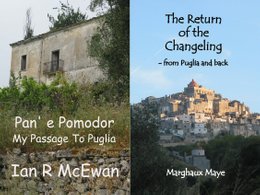Tenuta Villa Oleandro
Historic Center
"Vico", from the Latin “vicus” for village, was founded in AD 970 by the Schiavone (Slav) Sueripolo who, in the pay of the Byzantines, had rid the Gargano of the Saracen pirates who'd made it their refuge. However evidence of the presence of human habitation in the area dates back to Neolithic times and about 200 Paleochristian burial sites have been discovered on the Gargano promontory. An important site that is well worth a visit is the Ipogeo di Monte Pucci. A place of ancient origins, Vico del Gargano conserves within its territory archaeological remains of inestimable value.
During the early Middle Ages the town suffered many incursions and much pillaging. Having conquered the Gargano the Normans built the first castle in Vico during the 11thC and in AD 1167 the church of St Peter was built, extra-moenia, in other words, outside the citadel, on a hill known as Tabor. In AD 1240 the castle of Vico was extended by the Emperor Frederick II of Swabia and then in AD 1292 Teodisco de Cuneo provided Vico with a remarkable defence system consisting of fortified walls with twenty or so lookout towers that surrounded the original Civita and Terra quarters.
In AD 1495 Ferdinand II of Aragon gifted the fiefdom of Vico to Galeazzo Caracciolo, who had distinguished himself by expelling the Turks from Otranto. During the 17thC the fiefdom passed to the Spinelli family and the arrival of numerous colonists from Dalmatia lead to the creation of the third quarter, Casale, which was built outside, and clinging to, the citadel walls.
The historic center of Vico del Gargano is made up of the “Terra”, “Civita” and “Casale” quarters. The first two, enclosed within the fortified walls with its fourteen remaining lookout towers, represent the oldest part of the historic center.
The “Terra” quarter is perhaps known as such because it was built and inhabited by those people who, invited by Sueripolo, resettled in the urban center having previously been dispersed among the hamlets and lands around Vico. The "Casale" quarter, on the other hand, occupies the hilly area below Terra and Civita and dates back to the 17thC.
Casale, although largley the "newest" quarter of Old Vico, part of it dates back to much earlier times. According to legend, it was built by Illyrian Christian immigrants (peoples from the western Balkan Peninsula) who landed on the beaches at San Menaio. The only vestige of this presence in Vico is the Slavic name for the stretch of the Asciatizzi watercourse that flows beneath Casale: "u rekh" which in Slavic means "the river".
Vico historic center boasts an organic Mediterranean-style architecture well suited to the defensive and basic needs of the peoples who built it. Among the largest in the Gargano, it is undoubtedly one of the most evocative and picturesque historic centers, not only on the Gargano promontory, but also in the whole of Puglia. This thanks to numerous characteristic features: the Norman-Swabian-Aragonese Castle; the Chiesa Matrice dell'Assunta and other churches; the narrow and winding streets that branch off one another in a herringbone pattern; the little squares and covered passageways. And in some instances random streets are crossed by a series of arches that serve to support the buildings they join together.
.
The houses built higgledy-piggledy up against one another according to the lay of the rocky landscape, each had a cave or stable on the ground floor, living rooms on upper floors, piedd' (external stairway), characteristic chimney, cucin' monacesch' (monk's-cell kitchen where two tiny windows flank the chimney breast); plain or fancy stone doorway, often with crested keystone. Many also featured stone rings, for tying up the family transportation of old, donkey mule or horse, and some, religious votive shrines.
.
Olive oil and citrus fruits have for centuries been mainstays in the typically agricultural and pastoral economy of the Gargano town. There is no shortage of trappeti (ancient olive mills) dug into the rock below the dwellings of old Vico, the most notable, and definitely worth a visit, is the Trappeto Maratea.
The architectural features of this evocative historic center are still largely intact and provide visitors with a photo opportunity practically around every corner. Therefore, it is no coincidence that Vico del Gargano has been added to the list of the "most beautiful villages in Italy" and is, in fact, ranked in 5th place for 2022.
Pan' e Pomodor
- My Passage to Puglia
by
Ian R McEwan
&
The Return of the Changelling
- from Puglia and back
by
Marghaux Maye
Tenuta Villa Oleandro
Extra Virgin Olive Oil
Single Estate Cold Pressed
Superior quality oil obtained directly from "Ogliarola Garganica" olives using only mechanical methods.

